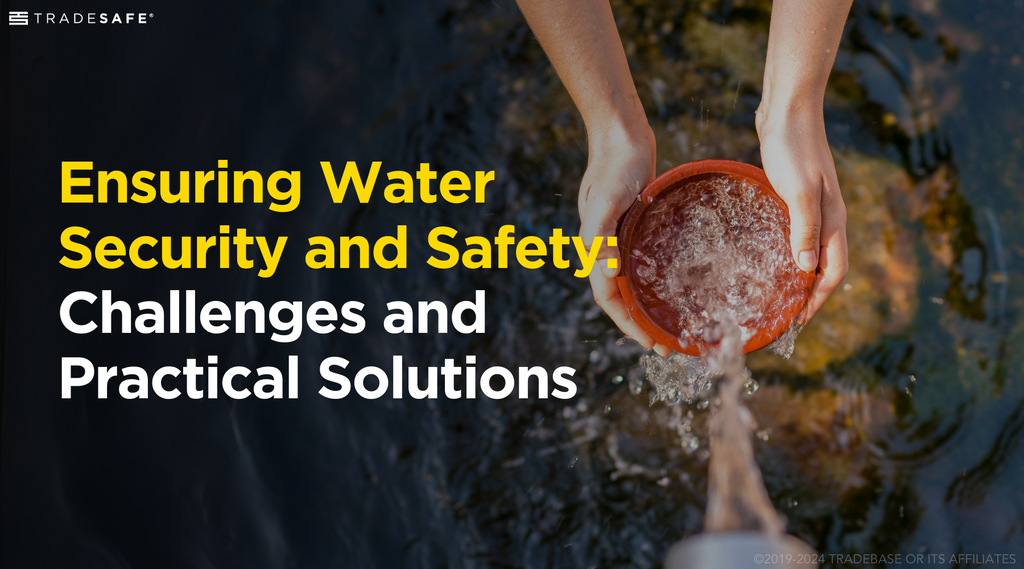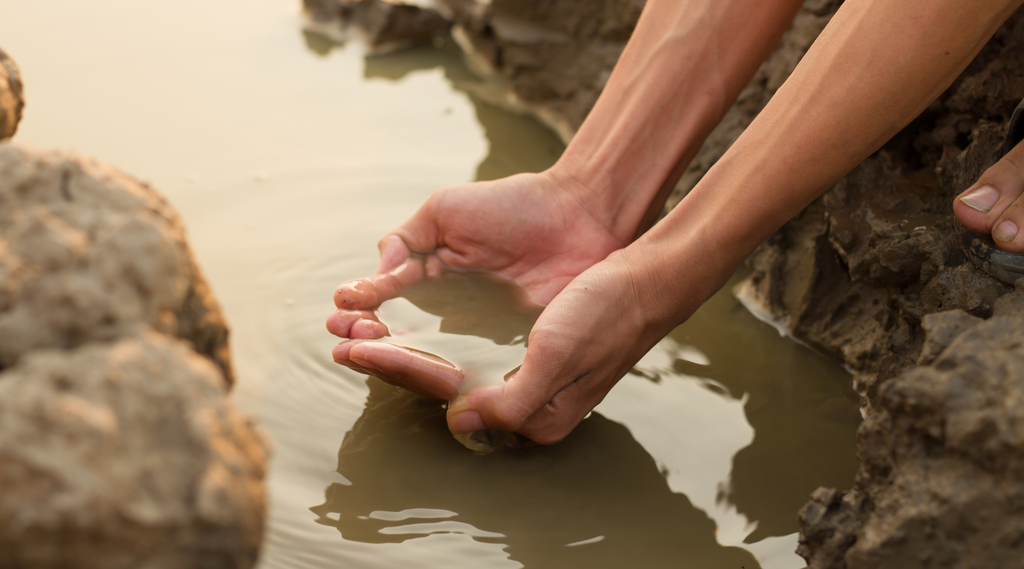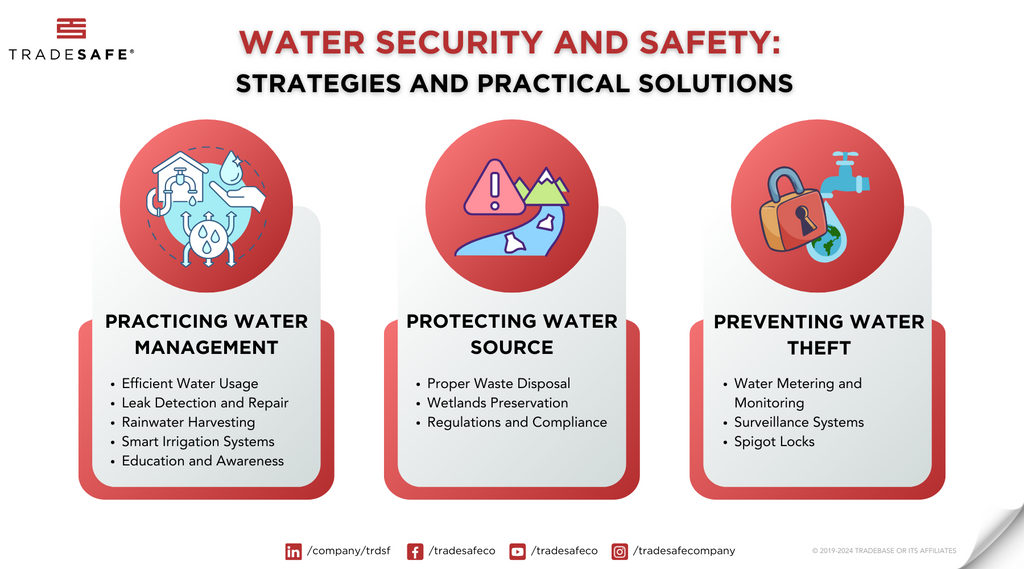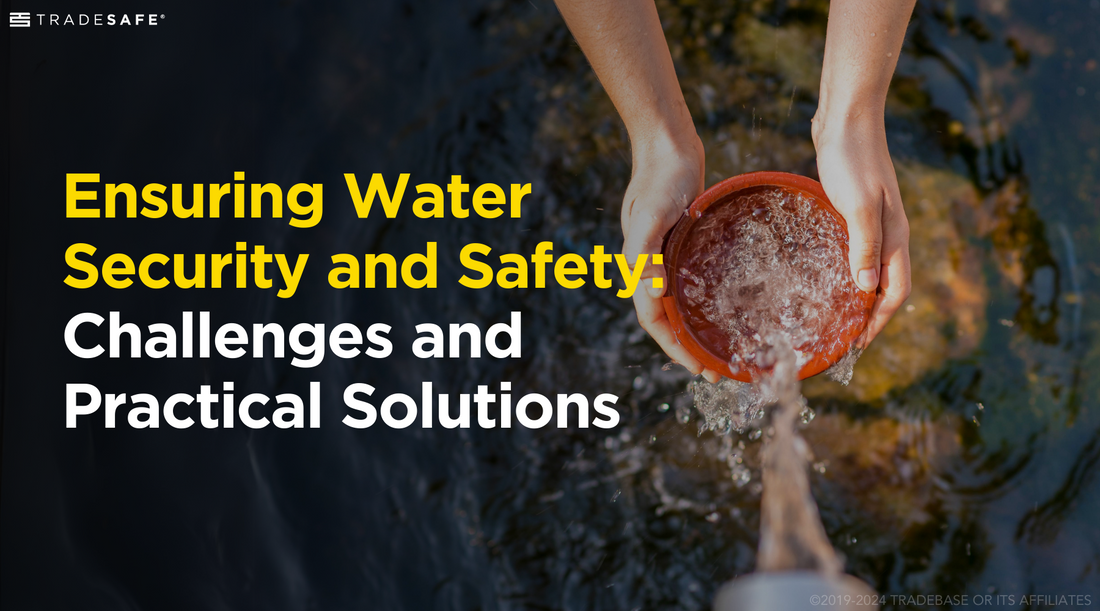
Water security and safety are key concepts that influence every part of our lives. From making sure everyone has enough clean water to drink, to keeping our rivers and oceans free from pollution, the emphasis lies on learning how to manage and conserve water in safe and sustainable ways. This article explores what water security and safety means, looks at the major challenges we face, and discusses practical solutions and actionable steps to ensure global water security.
What Is Water Security and Safety: An Overview
The goal of water security and safety is to ensure that everyone has access to sufficient, safe, and sustainable resources. Water security refers to the reliable availability of an acceptable quantity and quality of water for health, livelihoods, and production, coupled with an acceptable level of water-related risks.
On the other hand, water safety focuses on protecting water supplies and resources from contamination, pollution, and other harmful practices that could endanger human health and the environment. Safety measures are implemented to ensure that water remains free from pollutants and pathogens that could lead to disease or environmental degradation.
Here’s a more detailed look at the key components and concepts related to water security and safety:
- Sufficient Water: This means having enough water to meet all needs—from drinking to bathing to growing food. It’s not just about quantity but also about how consistently water is available. In many parts of the world, water might be plentiful during the rainy season but scarce during dry months.
- Safe Water: Safe water is water that's clean and free from pollutants and pathogens (germs that can cause disease). Using or drinking water that is contaminated can lead to serious health issues like cholera or lead poisoning. Safety also includes the protection of water sources and infrastructure from tampering or terrorist attacks.
- Sustainable Water: This refers to managing water in a way that ensures it can meet our needs today without compromising the ability of future generations to meet their needs. This involves careful planning and management of water resources, considering environmental impacts and the needs of diverse communities.
- Accessibility: Water should be accessible to all, which means it must be physically reachable and affordable. Many people must travel long distances or pay high prices for clean water, which can make it difficult for poorer communities to get the water they need.
Challenges to Water Security and Safety

Water security and safety face multiple challenges that vary in complexity and impact across different regions of the world. Here are some detailed insights into each major challenge:
Water Scarcity
Water Scarcity is defined as a situation where the available water within a region is insufficient to meet the needs of the population. According to the World Resources Institute (WRI), by 2050, many parts of the world, including regions in the United States, the Middle East, and India, will face severe water stress. The consequences of water scarcity are profound; it can lead to crop failures, which in turn increase food prices and insecurity. It forces people to depend on unsafe water sources, leading to various health problems. Economically, water scarcity can hinder industrial and agricultural productivity, potentially causing economic downturns and increased poverty.
Water Pollution and Contamination
Pollution and contamination of water occur when harmful and hazardous substances—such as chemicals, waste, and pathogens—enter a water system, rendering it toxic to humans and the environment. The primary causes of water pollution and contamination include industrial discharges, agricultural runoff containing pesticides and fertilizers, untreated sewage, and irresponsible disposal of household and industrial water waste. The effects are severe; polluted water is linked to diseases such as diarrhea, typhoid, and hepatitis. Environmentally, it can cause the death of aquatic life, disrupt ecosystems, and render rivers and lakes biologically dead.
Water Theft
Water theft involves the unauthorized use or diversion of water from its legal course or reservoir. This can occur in smaller instances to grander scales. Regardless, the consequences of water theft are significant; it exacerbates water scarcity for legal users and can lead to higher operational costs for water authorities, which may result in increased water prices. Furthermore, water theft undermines efforts to manage water sustainably, necessitating more stringent regulations and enforcement challenges.
Water Security and Safety: Strategies and Practical Solutions

Ensuring water security and safety is crucial, not just for environmental sustainability but also for the economic and social well-being of communities worldwide. From global initiatives to local actions, everyone has a role in addressing the challenges of water scarcity, pollution, and theft. Here's a look at practical strategies that can help:
Practicing Water Management: How To Conserve Water
Water conservation is essential for sustaining our precious water resources, especially in areas facing water scarcity. Here are some practical ways to manage and conserve water:
- Efficient Water Usage
- Leak Detection and Repair
- Rainwater Harvesting
- Smart Irrigation Systems
- Education and Awareness
Local governments and environmental groups can organize workshops to educate residents about the importance of water conservation and simple ways to save water at home and in the community.
Protecting Water Source: How To Prevent Water Pollution
Water pollution is a major challenge that affects ecosystems, wildlife, and human health. Here are some actionable steps individuals and communities can take to prevent it:
- Proper Waste Disposal
- Wetlands Preservation
- Regulations and Compliance
Keep up with local water regulations and support policies that protect water sources. Being informed enables you to participate in community decisions and advocacy efforts effectively. If you notice illegal dumping or other activities that could harm water sources, report them to local authorities. Community vigilance is crucial in enforcing water protection laws. Here are some regulations concerning water pollution prevention:
| Regulation | Overview |
| Clean Water Act (CWA) | Governs water pollution to restore and maintain the integrity of the nation's waters by preventing point-source pollution, promoting wastewater treatment, and maintaining wetlands |
| Safe Drinking Water Act (SDWA) | Focuses on protecting the quality of drinking water in the U.S., establishing standards for water suppliers, and overseeing local implementations. |
| National Pollutant Discharge Elimination System (NPDES) | Regulates discharges of pollutants into U.S. waters, requiring facilities to obtain permits for direct discharges into surface waters. |
| International Basel Convention on the Control of Transboundary Movements of Hazardous Wastes and Their Disposal | Aims to reduce hazardous waste movements between nations, preventing the transfer of hazardous waste from developed to less developed countries and managing wastes that can cause pollution. |
Preventing Theft: How To Use Water Security Tools and Technologies
Water theft can significantly impact communities, especially in areas facing water scarcity. To combat this issue, various tools and technologies are available to help secure water resources:
- Water Metering and Monitoring
- Surveillance Systems
- Faucet Locks
The use of a faucet lock is rather simple yet extremely practical in preventing water theft in residential homes and commercial buildings. These devices are designed to secure outdoor water taps by creating a physical barrier on the spigot. A faucet lock is typically made of durable materials like brass or steel and can be easily attached to standard hose bibs or spigots. Once locked, they prevent the tap from being turned on without the key, making it difficult for thieves to access the water.
Addressing the challenges associated with conserving water and mitigating pollution is pivotal for sustainable water security outcomes. The threats posed by oil spills and oil pollution, which introduce toxic chemicals into surface water, underscore the urgency of adopting robust measures to protect our water resources. These pollutants not only degrade the quality of water but also harm aquatic life and ecosystems, contributing to global warming and creating cycles of environmental degradation.
Effective management and strict regulations are essential to prevent contaminated water and to safeguard public health and the environment. By prioritizing water conservation and pollution control, we can ensure a secure water future in the face of escalating global environmental challenges.
FAQs
Is tap water safe?
In most developed countries, yes, tap water is safe to drink as it is treated and tested to meet safety standards. However, it's a good idea to check local water quality reports or test your water if you have concerns.
What causes water pollution?
Water pollution can be caused by many factors including industrial waste, agricultural runoff, improper disposal of waste, and leakage of hazardous materials. Household chemicals and even personal care products can also contribute to water pollution when not disposed of properly.
Do I need a water treatment system?
It depends on the quality of your local water supply and your personal needs. If your water comes from a reliable municipal source, additional treatment may not be necessary. However, if you notice a change in taste, odor, or appearance, or if your water comes from a private source like a well, a treatment system can ensure its safety.
What is the difference between conserve water and save water?
"Conserve water" refers to using less water and improving water use efficiency to reduce waste, while "save water" generally means actions taken to avoid using water unnecessarily—both contribute to reducing overall water consumption.
How do you detect water theft?
Water theft can be detected through various means such as monitoring unusual decreases in water pressure, unexpected increases in water bills, or using advanced metering infrastructure that can alert you to abnormal usage patterns indicative of theft.
